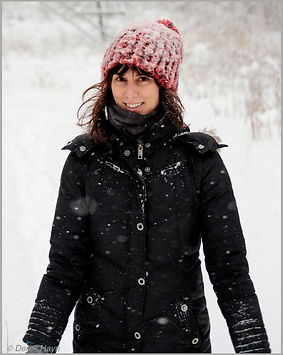Biography
Dr. Kelly Lombardo is an Associate Professor in the Department of Meteorology and Atmospheric Science at The Pennsylvania State University in University Park, Pennsylvania. Lombardo received the Office of Naval (ONR) Research Young Investigator Program (YIP) Award in 2017, for outstanding faculty members of higher education institutions to support their research and to encourage their teaching and research careers, and the National Science Foundation (NSF) Faculty Early Career Development Program (CAREER) Award in 2018, NSF’s most prestigious award for early-career faculty who have the potential to serve as academic role models in research and education. Lombardo was elected to and currently serves on the Membership Committee of the University Corporation for Atmospheric Research (UCAR). She is an invited member of the Computational and Information Systems Laboratory (CISL) High Performance Computing (HPC) Allocation Panel (CHAP), serves as an Associate Editor for Weather and Forecasting, and is a member of the Severe Local Storms Scientific and Technological Activities Commission (SLS STAC). Lombardo completed her postdoctoral research and received her Ph.D. in 2011 from Stony Brook University. She earned her B.S. and M.S. in Atmospheric Science in 2001 and 2004, respectively, from the University at Albany.
Pronouns: she/her/hers
Research interests
Coastal storms are sensitive to the surface and atmospheric boundary layer heterogeneities found in coastal regions, including horizontal gradients in temperate, moisture and wind across the coastlines, as well as inland coastal topography. These coastal heterogeneities increase the complexity of the physical processes associated with storm development, characteristics, evolution, and intensity, making understanding and forecasting these systems a challenge. With mesoscale coastal storms capable of producing high winds, frequent lighting, heaving rain/snow, flash flooding, hail, and tornadoes, this is especially problematic due to the large population clustered along the coastlines. Our group uses a combination of numerical modeling and observations to quantify the impact of the coastal environment, including the marine atmospheric boundary layer (MABL) and coastal orography, on mesoscale coastal storms, such as warm season mesoscale convective systems in the mid-latitudes and tropics, coastal winter cyclones (nor'easter), and sea breezes. We use several numerical modeling tools, including the Weather Research and Forecasting (WRF) model (Skamarock et al. 2008), the Cloud Model 1 (CM1; Bryan and Fritsch 2002), and the Regional Atmospheric Modeling System (RAMS) model (Cotton et al. 2003). Lower- and full-tropospheric data obtained using our Graw Radiosonde system and our Sparv Embedded Windsonds.
For more information, please check out our current research projects and publications!
References
Bryan, G. H., and J. M. Fritsch, 2002: A benchmark simulation for moist non-hydrostatic numerical models. Mon. Wea. Rev., 130, 2917-2928
Cotton, W. R., and Coauthors, 2003: RAMS 2001: Current status and future directions. Meteor. Atmos. Phys., 82, 5-29
Skamarock, W. C., and Coauthors, 2008: A description of the Advanced Research WRF version 3. NCAR Tech. Note. NCAT/TN-475+STR, 125pp
